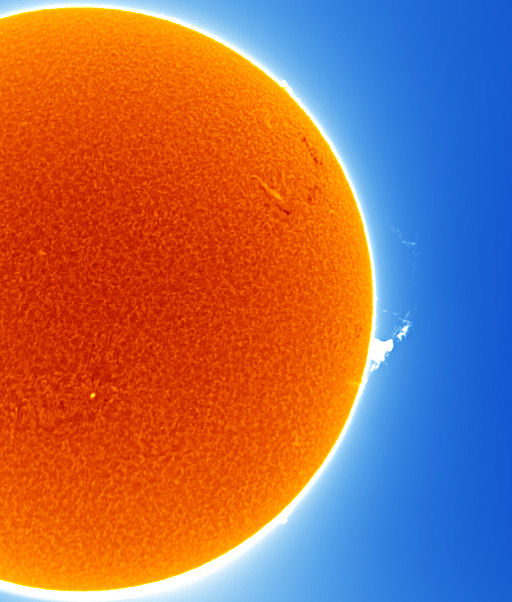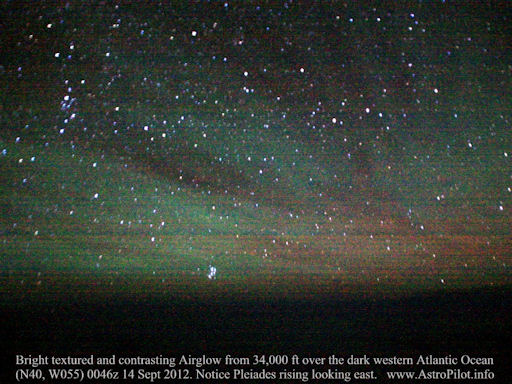They came from outer space--and you can have one! Genuine meteorites are now on sale in the Space Weather Store. | | |
MYSTERY SPHERES ON MARS: NASA's Mars rover Opportunity, still active after all these years, has just discovered a dense accumulation of puzzling little spheroids in a rock outcrop on the Red Planet. [full story]
MASSIVE SOLAR PROMINENCE: Today, a huge arc of plasma-filled magnetism is rising over the sun's western limb. "It's more than 30 Earth diameters long," says amateur astronomer John Stetson, who this morning photographed the structure backlit by the blue skies of Falmouth, Maine:

Here is what the prominence looks like through the telescopes of NASA's Solar Dynamics Observatory: image.
The size of the structure makes it an easy target for backyard solar telescopes. "Some prominences move at very high speed, but this one appears to be a relatively steady target for solar observers," says Stetson. "It is worth a look."
Realtime Space Weather Photo Gallery
NOT AURORAS: For the past week, solar wind has been buffeting Earth's magnetic field, turning skies around the Artic Circle beautiful shades of green. But not every green sky is caused by the aurora borealis. Last night, for example, pilot Brian Whittaker was flying 34,000 feet over the Atlantic Ocean when he witnessed verdant hues caused by a completely different phenomenon--airglow. Here is the picture he took from the cockpit window:

"A dark and moonless night away from all lights allowed a great view of this textured patch of airglow," says Whittaker. "The illumination was faint, but it could be seen especially in contrast to the dark ocean abyss below!"
Although airglow resembles the aurora borealis, its underlying physics is different. Airglow is caused by an assortment of chemical reactions in the upper atmosphere. During the day, ultraviolet radiation from the sun ionizes atoms and breaks apart molecules. At night, the atoms and molecules recombine, emitting photons as they return to normal. This process produces an aurora-like glow visible on very dark nights.
Because the Moon is new on Sept. 15th, tonight is a good night to spy this phenomenon. Get away from city lights, if you can, and take a look!
Realtime Aurora Photo Gallery
Realtime Noctilucent Cloud Photo Gallery
[previous years: 2003, 2004, 2005, 2006, 2007, 2008, 2009, 2011]

